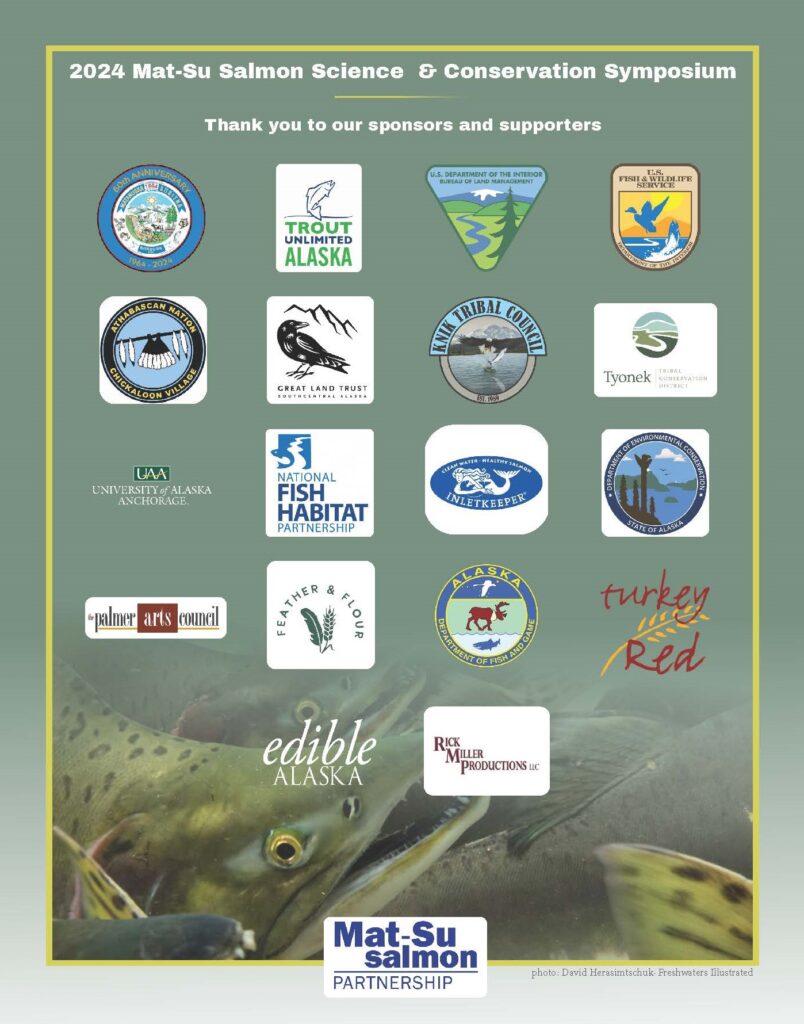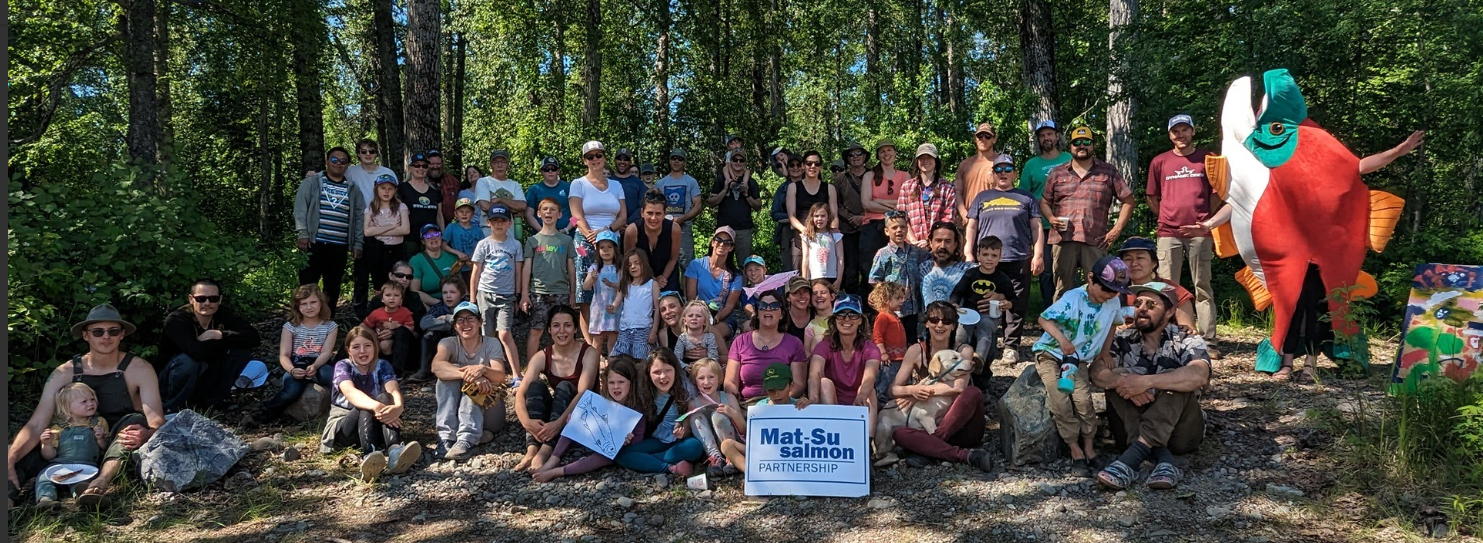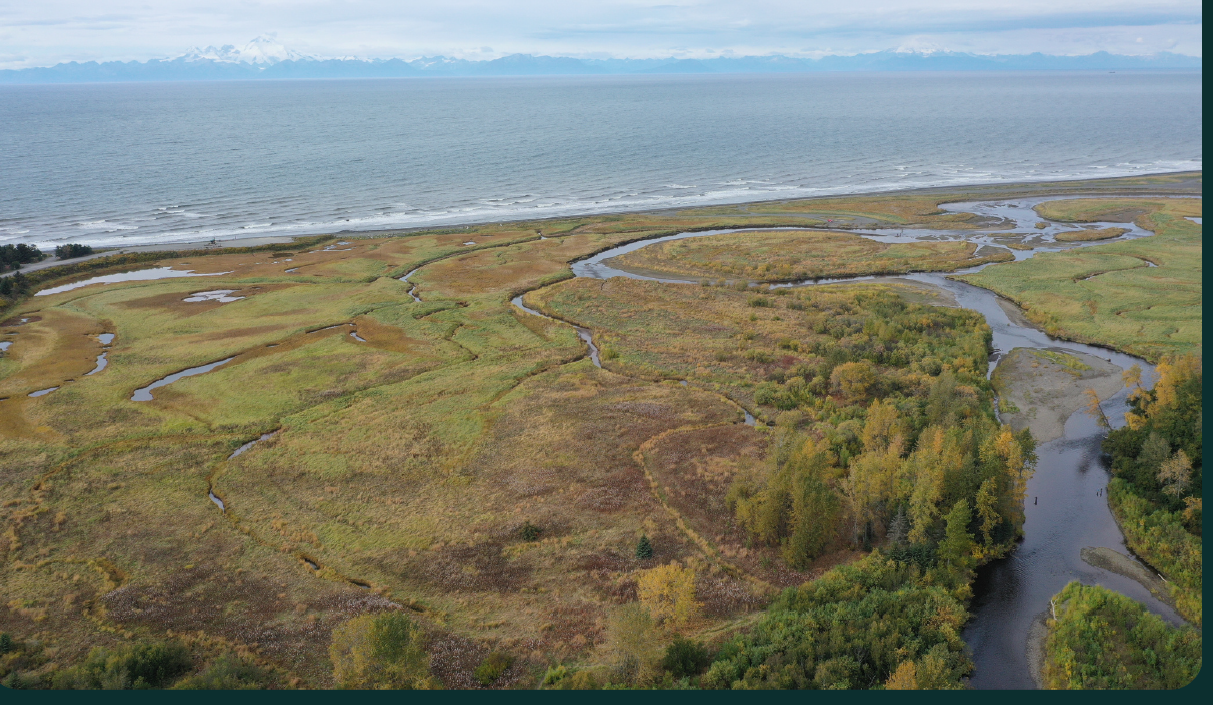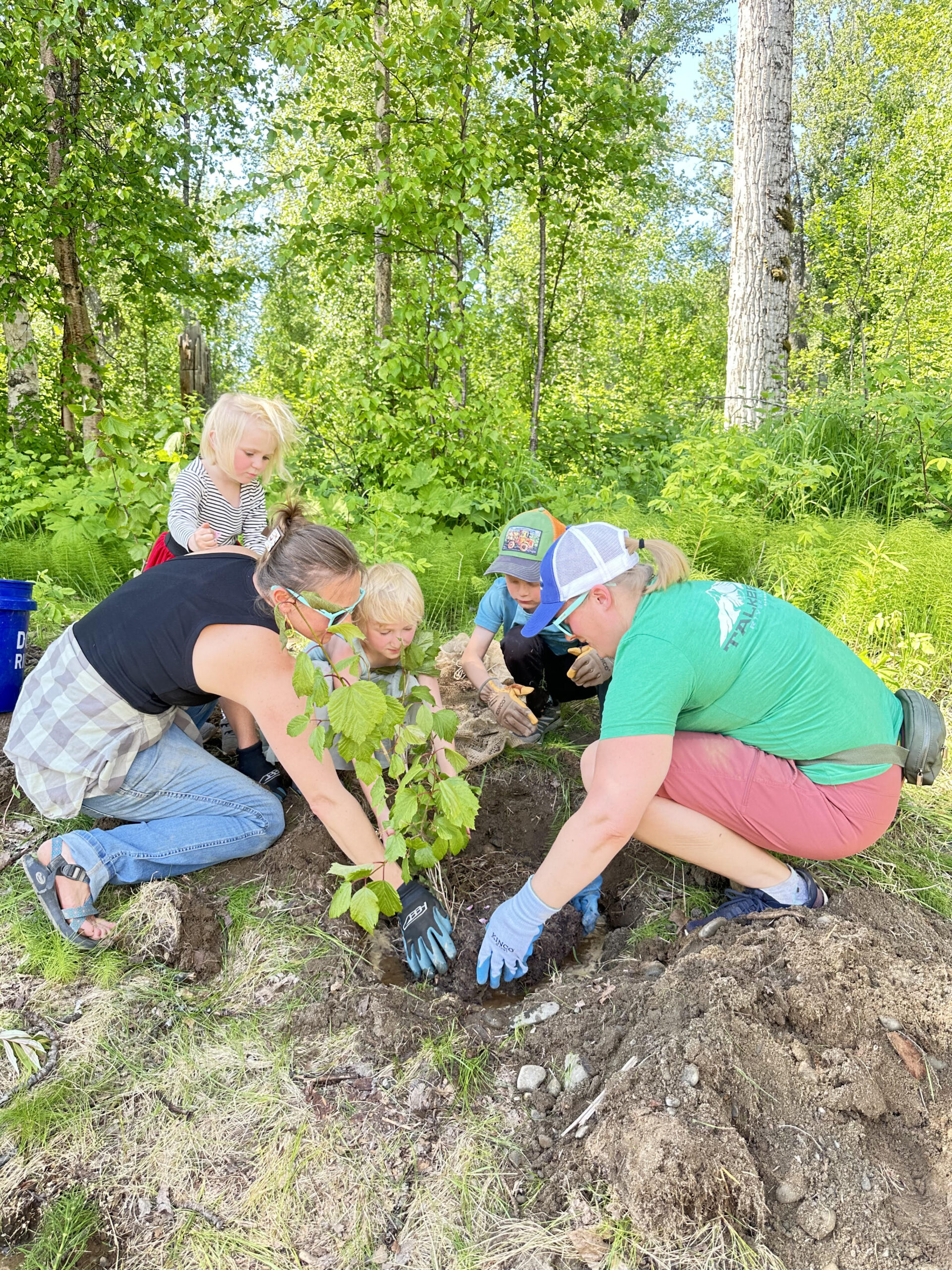The Mat-Su Basin Salmon Habitat Partnership hosted the 17th annual Mat-Su Salmon Science & Conservation Symposium on November 18th and 19th, 2024 in Palmer, Alaska! Attended by 100 people each day, this year’s symposium included a broad range of topics covered in nearly 40 oral and poster presentations related to salmon habitat, reflecting diverse areas of expertise held by our partners. A data transfer session continued discussions from previous Symposiums that speak to the challenges of ensuring that current salmon science can inform community decision making. Attendees also enjoyed a special art display from Palmer High School students. As part of the evening social, the Partnership hosted an acoustic open music jam attended by over 60 people, featuring local Palmer musician Aspenyarrow. This year’s theme, Making the Invisible Visible: Unraveling Freshwater Mysteries through Science and Storytelling, unfolded with the help of some amazing keynote presenters!
Learn more below and at the following links Flyer, Agenda and find presentation abstracts, contact information and more in the event booklet here, with presentation slides and video below. Find Social and Music Jam Flyer here.
Keynote speaker Jeremy Monroe of Freshwaters Illustrated shared how they work to conserve freshwater worlds through visual storytelling while Dr. Jenifer McIntyre, Washington State University and Dr. Patrick Tomco, University of Alaska Anchorage talked about stormwater contaminant 6PPD-quinone – a toxicant that leaches from vehicle tires and is linked to acute coho salmon mortality. A panel presentation followed that focused on 6PPD-quinone in the Mat-Su and what we can do about it. Learn more about the presentations and keynote speakers below.
As always, the Symposium is a forum to share the latest scientific research, restoration and conservation efforts related to salmon and their habitat in Matanuska-Susitna basin. Thank you for joining us! Special thanks to the planning committee and generous supporters listed below for making this event possible!
More about the keynote presentations:
Founder and director, Jeremy Monroe, and award-winning natural history photographer, David Herasimtschuk of Freshwaters Illustrated presented Seeing and Sharing Freshwater Ecosystems Through a Wider Lens: Reflections from 20 Years of Educational Filmmaking. This was a recorded presentation followed by a virtual Question and Answer. Freshwaters Illustrated is a non-profit whose mission is to raise public awareness about the life, study, and conservation of freshwater ecosystems through visual media and storytelling.
Dr. Jenifer McIntyre is an Associate Professor of aquatic toxicology at Washington State University’s School of the Environment. In 2020, Dr. McIntyre and colleagues discovered a novel chemical called 6PPD-quinone leaching from vehicle tires that is one of the most acute toxicants known to science, explaining acute die-offs of coho salmon in roadway-impacted watersheds. Dr. McIntyre talked about 6PPD-quinone in the Pacific Northwest: Its impact, discovery and how it is being addressed. Dr. Patrick Tomco is an Professor of Chemistry and Director of the Applied Science, Engineering and Technology Lab at University of Alaska Anchorage and followed Dr. McIntyre’s presentation with an update on the status of our knowledge about 6PPD-quinone here in Alaska! Both Drs. McIntyre and Dr. Tomco presented in-person at the Palmer Depot, in Palmer, Alaska.
We are excited to have brought these amazing presenters and their work to you! Learn more about them Here and find Symposium presentations below!
Symposium Presentations *Click the presentation title below to download the slide deck.
Virtual Keynote Address: Exploring and Sharing Freshwater Worlds Through Visual Storytelling – Jeremy Monroe and David Herasimtschuk, Freshwaters Illustrated *Presentation available by request.
Integrating Traditional Ecological Knowledge with Modern Science for Salmon Conservation: A Case Study from the Chickaloon Village Traditional Council, Cody Henrikson (Chickaloon Village Traditional Council).
Salmon Through Time: Chickaloon Native Village Fisheries Research in the Matanuska Watershed, Ben Americus (Chickaloon Village Traditional Council)
From Barriers to Solutions: Capacity Building for Fish Passage Restoration, Andrea James (Chickaloon Village Traditional Council)
Salmon Spawning in Sixmile Lake, JBER Alaska, Mitchell Paisker (U.S. Fish and Wildlife Service)
The Future is Jawless: Entering the Golden Age of Lamprey Research in Alaska, Nate Cathcart (Alaska Department of Fish and Game)
Tyonek Tribal Conservation District Watershed Monitoring Updates: AWC Additions, Habitat Assessments, and Invasive Species Surveys, Andrew Wizik (Tyonek Tribal Conservation District)
ADNR Elodea Control Projects Updates in South Central Alaska – Passing of the Torch, Looking to the Future, Cody Jacobson (Alaska Department of Natural Resources)
NOAA Habitat Restoration in Alaska through the Bipartisan Infrastructure Law & the Inflation Reduction Act, Emily Mailman (National Oceanic and Atmospheric Administration)
Mat-Su Borough Fish Passage Program 2024, Michael Campfield (Mat-Su Borough)
Science to Conservation Outcomes: Data Transfer, Sue Mauger (Cook Inletkeeper), Kevin Keith (Alaska Department of Fish and Game), Michael Mazzacavallo (Alaska Department of Fish and Game), Anjanette Steer (UAA), Marcus Geist (UAA), Amber Crawford (Alaska Department of Environmental Conservation), Colton Percy (Alaska Department of Fish and Game), Mike Daigneault (U.S. Fish and Wildlife Service)
Welcome and Keynote Address: Novel Tire-derived Toxicant 6PPD-quinone: Discovery, State of Science, and Regulation – Dr. Jenifer McIntyre, Washington State University *Video. Keynote start: 6min20sec.
Keynote Address: Update on the Status of Our Knowledge About 6PPD-quinone in Alaska – Dr. Patrick Tomco, University of Alaska Anchorage *Video
6PPD-quinone and the Mat-Su: Panel Discussion, Moderator: Laura Eldred (Alaska Department of Environmental Conservation) and five panelists. *Video
Fish, Politics and Policy, Peter Micciche (Board Member, National Fish Habitat Partnership/Mayor, Kenai Borough) *Video
Waterbody Setbacks in the Matanuska-Susitna Borough: A Year Later. Process Status and Changes Proposed by the Waterbody Setback Advisory Board, Matthew LaCroix (U.S. Environmental Protection Agency)
Effects of Watercraft Wakes on Shoreline Erosion, and Potential Impacts for Salmon at Big Lake, Alaska, Eli Wilson (University of Alaska Fairbanks)
Industrialization of the West Su Drainage, Margaret Stern (Susitna River Coalition)
Mat-Su Borough Fish & Wildlife Commission Update, Gabe Kitter (Mat-Su Borough Fish and Wildlife Commission)
Deshka River Temperature Monitoring and Salmon Studies, Daniel Rinella (U.S. Fish and Wildlife Service)
The Effects of Heat Stress on Juvenile Chinook and Coho Salmon Growth in the Deshka River, John Hermus (University of Alaska Fairbanks)
Juvenile Salmon Distribution and Body Condition: The Influence of Thermal Regimes in the Little Susitna Watershed, Erin Larson (Alaska Center for Conservation Science, University of Alaska Anchorage)
The Next Water Temperature Action Plan: Building on a Decade of Collaboration and Strategic Actions, Sue Mauger (Cook Inletkeeper)
Thank you to 2024 Symposium sponsors and supporters shown below!!



